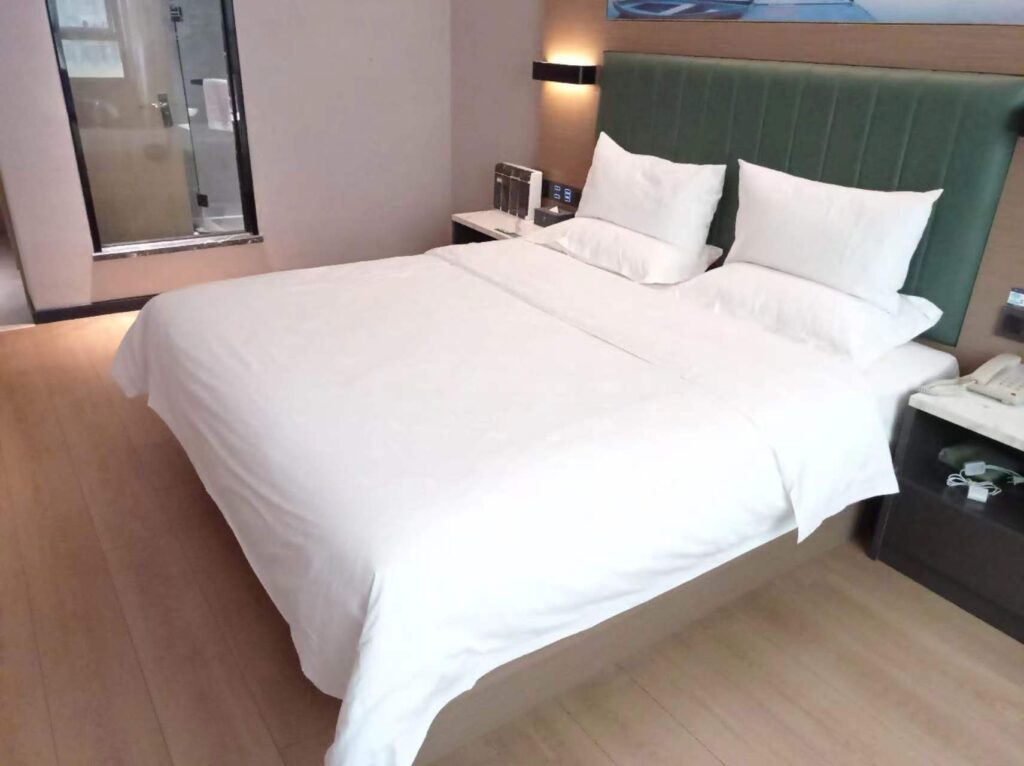Most hotel and restaurant guest rooms use predominantly white bed linens, so hotel staff attach great importance to the whiteness of the bed linens. If only bleaching is used, it can achieve a certain degree of whiteness. However, upon careful observation, you may still notice a slight yellow or brown tint on the linens. This is mainly due to the fabric itself absorbing a small amount of blue light from natural daylight. To achieve an ideal level of whiteness, regular and measured whitening treatments should be implemented on the linens. So, how can white bed linens be kept bright and new?
Purpose of bleaching
The main objectives of bleaching during the washing process are twofold. First, it aims to remove dirt from the fabric that can only be eliminated through oxidation or reduction processes, thereby restoring the fabric to its original color. Second, it aims to enhance the whiteness and brightness of white fabrics and colored fabrics, making their colors more vivid and vibrant.
During the washing process, fabrics such as towels, bed sheets, and tablecloths go through rinsing, pre-washing, and main washing stages. Under reasonable dosing conditions, water-soluble stains, oil-based stains, and certain solid stains can be generally removed. However, some pigment-based stains that require special treatment through oxidation and reduction processes cannot be completely removed by regular washing. Therefore, a bleaching program must be included in the washing process to ensure complete removal of such stains.
Setting the bleaching time:
The duration of the bleaching process is related to the release time of the bleaching agent. Under ideal bleaching temperature and ideal detergent pH (pH 10.5), when the bleaching agent is added for one minute, it is already evenly dissolved in the detergent. At this point, effective chlorine is released uniformly, and by 6-8 minutes, the chlorine is almost completely released, resulting in a concentration of effective chlorine in the solution of 10 ppm. During drainage, the concentration of effective chlorine should be below 10 ppm. Therefore, extending the bleaching time after the complete release of effective chlorine does not have any effect.
Role of bleaching temperature:
Temperature plays a crucial role in the bleaching process. Whether oxygen bleach or chlorine bleach is used for bleaching in the program depends on the characteristics of the fabric being bleached and the color of the fabric.
Temperature is particularly important for chlorine bleaching. Increasing the temperature of the bleach solution can accelerate the bleaching process and shorten the duration. In general, increasing the bleaching temperature by 10°C can halve the bleaching time. If using chlorine bleach, the bleaching temperature is generally kept below 65°C to prevent yellowing of the fabric and decrease in colorfastness. If using oxygen bleach, a temperature range of 70°C to 90°C is recommended.
PH of the bleaching bath:
The pH of the bleaching bath has a significant impact on the damage to fabric colorfastness. When the pH of the bleaching bath is neutral (pH 7), it causes significant fabric damage. Bleaching in an acidic condition can achieve a fast bleaching speed, but it causes severe damage to the fibers and is generally not recommended. The optimal pH for chlorine bleach is around 10.2-10.5, which ensures a moderate bleaching speed with minimal fiber damage. In most cases, the main wash and bleaching can be carried out simultaneously to maintain the pH value while achieving the desired bleaching effect.
These are the washing methods for enhancing the whiteness of hotel bed linens. I hope they will be helpful for your hotel.